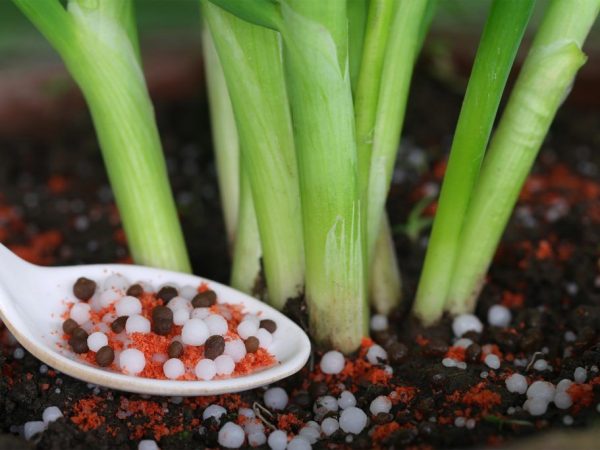
Onion is a familiar and necessary culture on the table of modern man. It is simple to grow it, but there are some points, the fulfillment of which guarantees the harvest of large succulent heads with independent cultivation - these are timely correct feeding.
Content
What and when to feed
The culture actively absorbs nutrients from the soil from the moment of planting. Assimilation of nitrogen occurs at 100%, potassium - at 40-45%, phosphorus - at 25-30%.
Preparation for spring planting begins in the fall, when organic matter is introduced in the form of humus or compost (10 kg per 1 m²). If an “active” culture grew on this site like onions, then it is advisable to combine it with mineral additives.
Top dressing in the spring and summer is carried out three times - this is a classic scheme. It is subject to correction depending on the circumstances at that point in time.
Types of top dressing:
- Top dressing No. 1 is carried out when the first leaf grows to 10-15 cm, if its color is not very saturated and the leaf seems weak. Nitrogen fertilizer (10g + 10l per 1-2m²) should be applied without overdoing, since nitrogen in large quantities affects the growth and maturation of the head.
- Top dressing No. 2 is carried out 15 days after top dressing No. 1 - this is approximately 1 month after planting the seed. During this period, the plant needs potassium in order for the head to form, and phosphorus for it to grow strong and large. The composition of the top dressing is superphosphate (60 g), nitrate and sodium chloride (30 g each), diluted in 10 l. This is the norm for 2m².
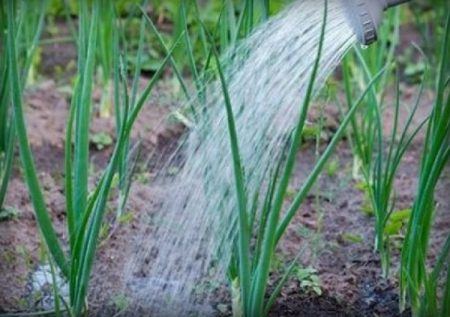
After checking whether the bulb is formed, calcium can be added to reduce soil acidity and as an aid in head growth.
- Top dressing No. 3 is carried out if the head has reached the size of a walnut and has stopped further growth. Superphosphate (40g per 10l) activates its development.
Cutting off the feather of the onion, which is often done, deprives the head of nutrition, and it grows smaller.
The appearance of the plant helps to determine the need for fertilizer application.
Appearance and need for feeding:
- saturated feather color, juicy dense pulp indicate the presence of necessary substances in the soil, therefore, in the middle and at the end of the vegetative period, it is necessary to feed with phosphorus and potassium so that the bulb forms larger;
- lack of nitrogen is expressed in a weak frail penis, too slow germination of the bulb;
- the yellowness of the pen indicates a small amount of potassium in the soil;
- with phosphorus deficiency, the tip of the green dries.
Top dressing is applied in solutions. If the weather is wet and rainy, you can dig dry fertilizer into the soil, deepening by 5-10 cm.
Types of fertilizers
As additives to the soil, different types of fertilizers are used: organics, minerals, and complex preparations. An important condition for making top dressing is their dosage - the bulb can accumulate nitrates.
Organic fertilizer
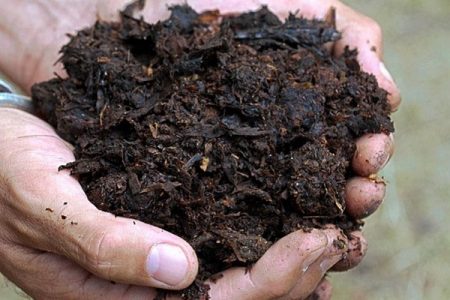
Organics are longer in the soil, decomposing gradually, so its effect is longer. The best time to use manure, chicken manure, urea, rich in nitrogen, is the autumn period, when the soil is prepared for spring planting. Introducing them in summer or spring can attract insect pests, cause active feather growth, thereby slowing down turnip growth. Organics at this time also badly affect the condition of the whole plant, significantly reducing the shelf life of the bulbs.
Options for nitrogen fertilizing:
- horse manure (1 part) diluted in water (20 parts), insist, dilute with water (1:10) when used;
- rotted cow manure (1 part) to insist in 10 liters of water a week, breed 1: 5 before use;
- infusion of greens is prepared for 3 days from chopped grass, weeds and water (squeeze the grass so that it does not pop up), dilute 1 cup of infusion in 5 liters of water.
Dropped infusion is watered between the rows, and infusion of greenery - directly to the head.
For sandy soils, the dosage of substances is reduced by about 1/5.
Mineral fertilizers
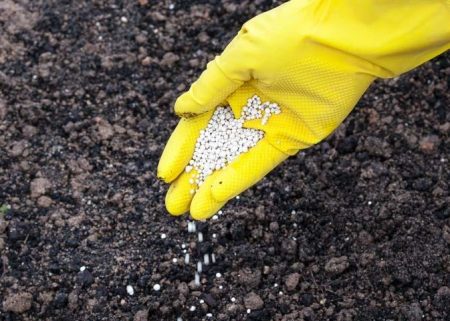
The advantage of mineral fertilizers is that they contain a specific substance in a certain dosage, it’s easy to cook, they act quickly and are effective. When using them, it is very important to adhere to the recommendations on the applied doses, otherwise you can burn the feather and damage the soil microflora.
When applying mineral fertilizers should be watered under the root, and the next day shed the earth with ordinary water.
There are convenient tools where the necessary substances are in the right amount, you only need to prepare them according to the instructions:
- Agricola-2 "For onions and garlic" activates the mass increase of the head and can be used in all 3 top dressings;
- Vegeta is suitable for all vegetable crops, enriches the soil with necessary nutrition.
Mixed fertilizer
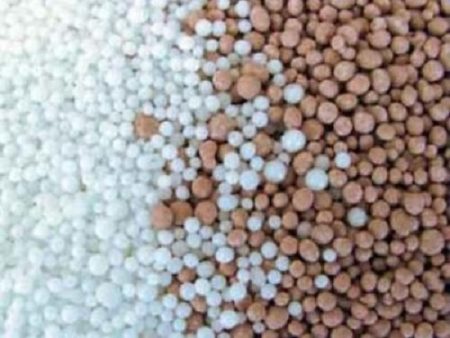
The use of mixed dressings requires an accurate calculation of the constituent substances and knowledge of the composition of the soil.
Options for mixed dressing:
- when planting sowing, the soil is watered with the composition - water, urea, slurry (10: 1: 0.25);
- for feeding No. 2, a solution of nitrophoska (2 tbsp) in 10 l is used;
- when feeding No. 3, superphosphate (20 g) and potassium salt (10 g) in a solution (10 l of water) are used.
Factors Affecting Onion Growth
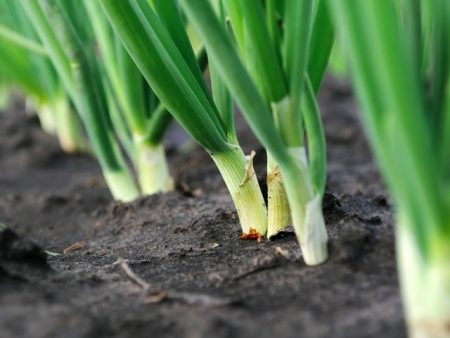
The formation of a strong head is influenced by many factors, not only the presence of top dressings, which you need to know about - this will help to avoid some unfavorable moments:
- a bed with a bow should be well lit, otherwise the heads grow smaller;
- neighboring crops are also important for onions, for example, it is well adjacent to vegetables such as carrots, radishes, beets;
- a dry pen indicates a lack of moisture, and a pale, drooping one indicates an excess;
- a large number of weeds can drown the growth of bulbs.
Feeding onions on greens
Onions are planted both for growing heads and for eating greens all season. The purpose of planting on greens is the formation of a large green mass. Nitrogen is needed for this, but potassium-phosphorus top dressing is no less important, because without them, nitrogen is absorbed worse, and the feather does not grow so juicy and tasty.
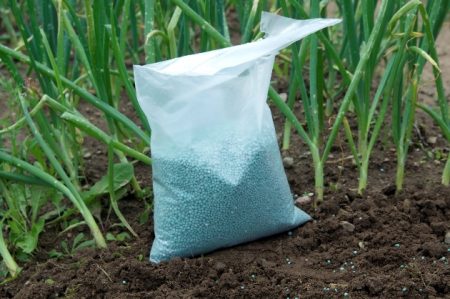
Two seasonings are carried out seasonally with an interval of 2 weeks:
- No. 1 (consumption per 1 m²) - a solution of 30 g of ammonium nitrate (urea) in 10 l;
- No. 2 (per 1 m²) - superphosphate (30 g), potassium chloride (10-15 g) in solution (10 l of water).
Along with mineral top dressing, irrigation with infusions of manure is carried out (preparation above), which is not recommended when growing on turnips.
Fertilizers for winter onions
Onions planted in winter require nutrients in the spring, therefore, during germination, it is necessary to feed with compounds with humic acids, biostimulants or organics in infusions. The remaining dressings are carried out in the same way as for spring onions.
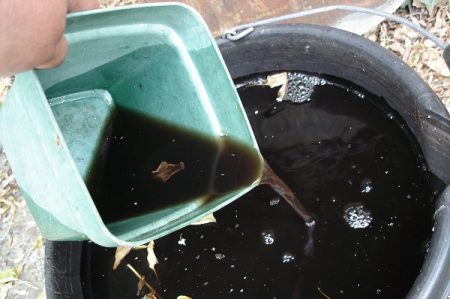
Folk dressing recipes
The people have simple and affordable recipes for top dressing without chemistry, as gardeners like to say. To prepare them, use the tools that are always at hand:
- saline solution is prepared from 3CT. l of salt and 10 l of water, used when watering to build a pen, in the fight against pests of the culture;
- The yeast infusion is rich in nitrogen and helps in increasing the mass of the head - in 1 bucket of water (40 ° -50 °), dilute the yeast (100 g), insist on the day, use the prepared amount per 3 m²;
- ammonia solution (3 tablespoons per 10 liters) is used to enrich the soil with nitrogen when the feather is yellowing, from an onion fly, given that only soil can be watered, feather is not recommended.
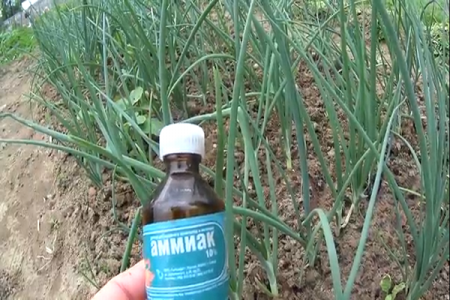
Timely and correctly applied top dressing is a necessary stage in agricultural technology of culture. Observing the state of the pen, you can always notice a lack of nutrients and make up for them by applying the necessary fertilizers.

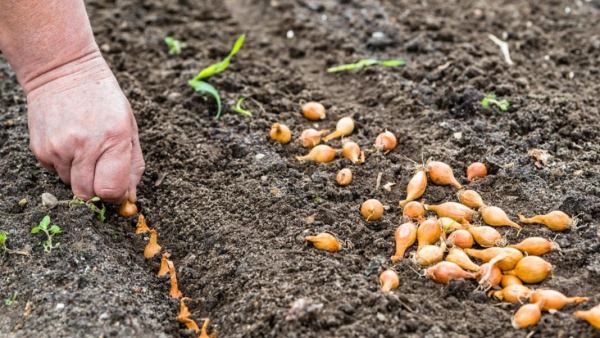
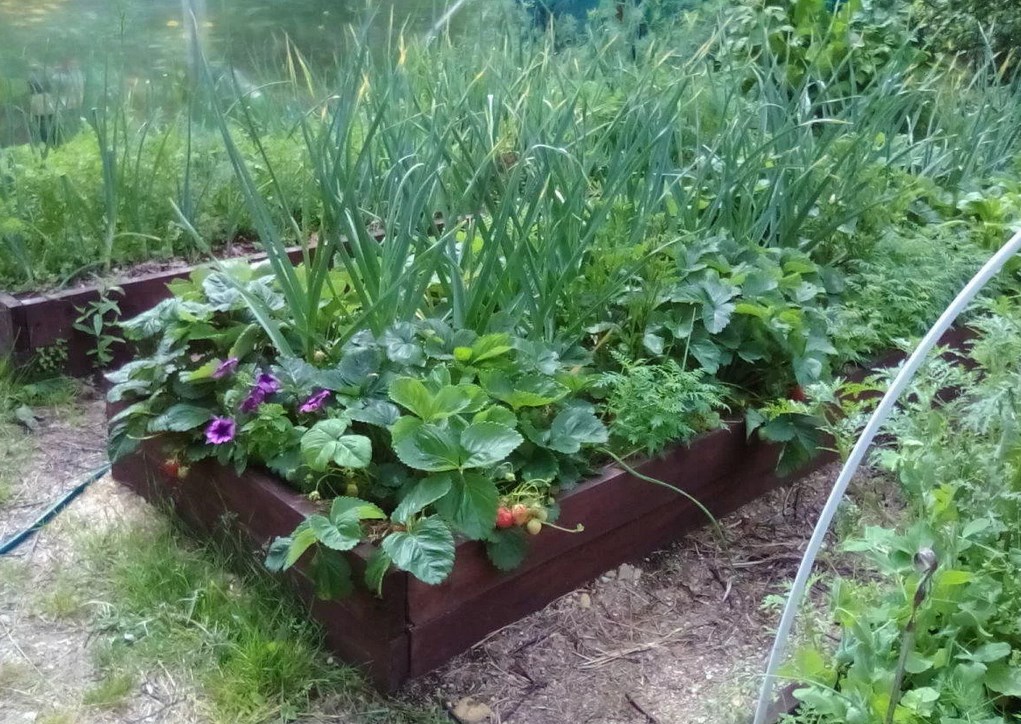
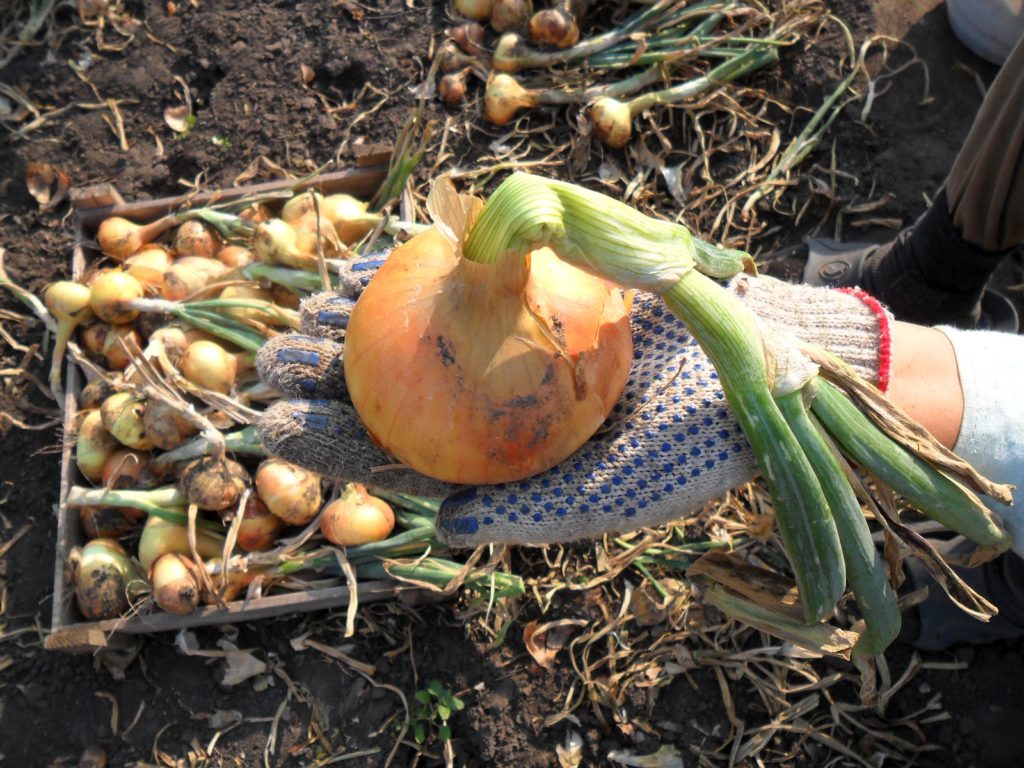
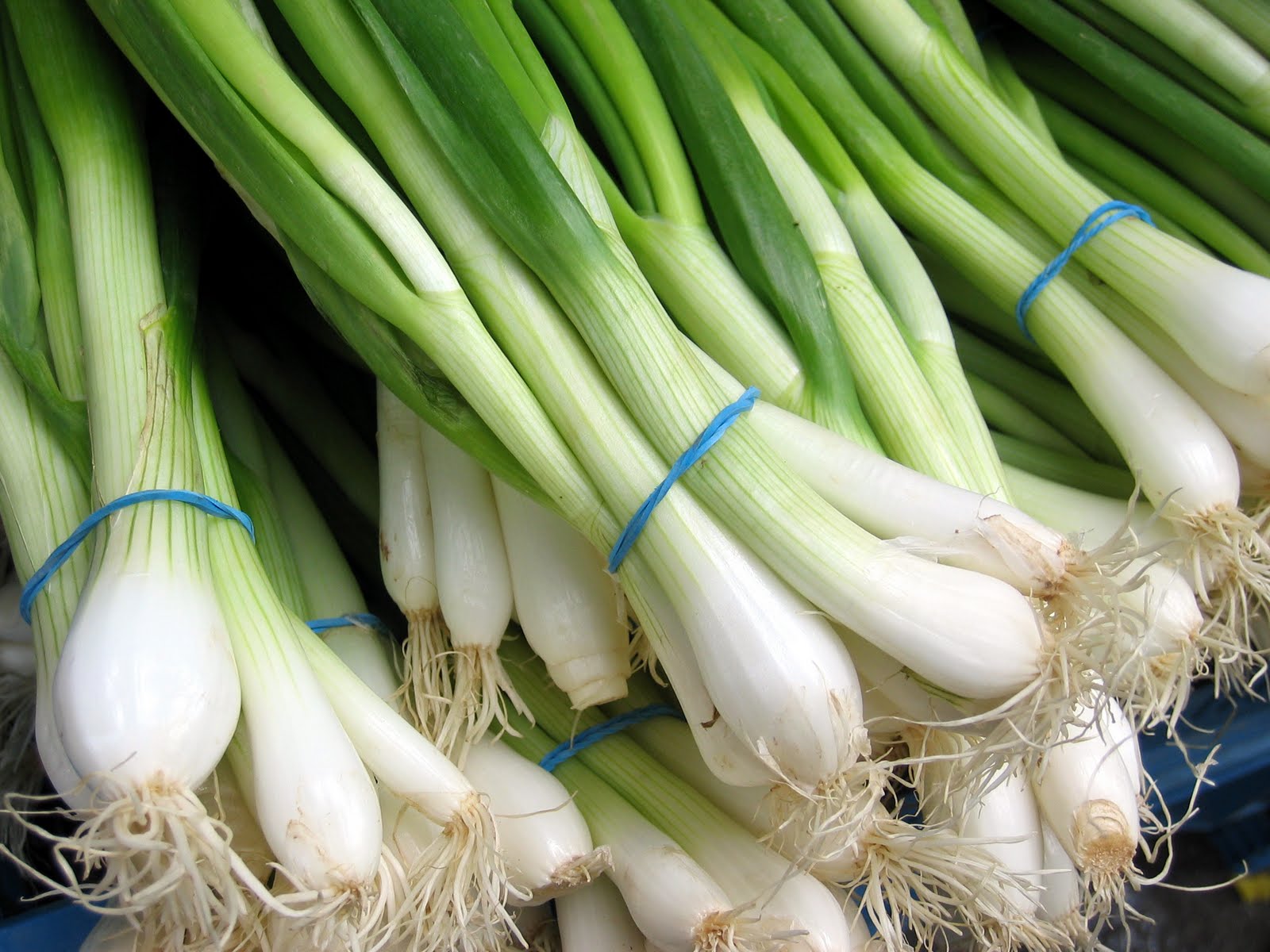 Growing onions on a feather in a greenhouse in winter
Growing onions on a feather in a greenhouse in winter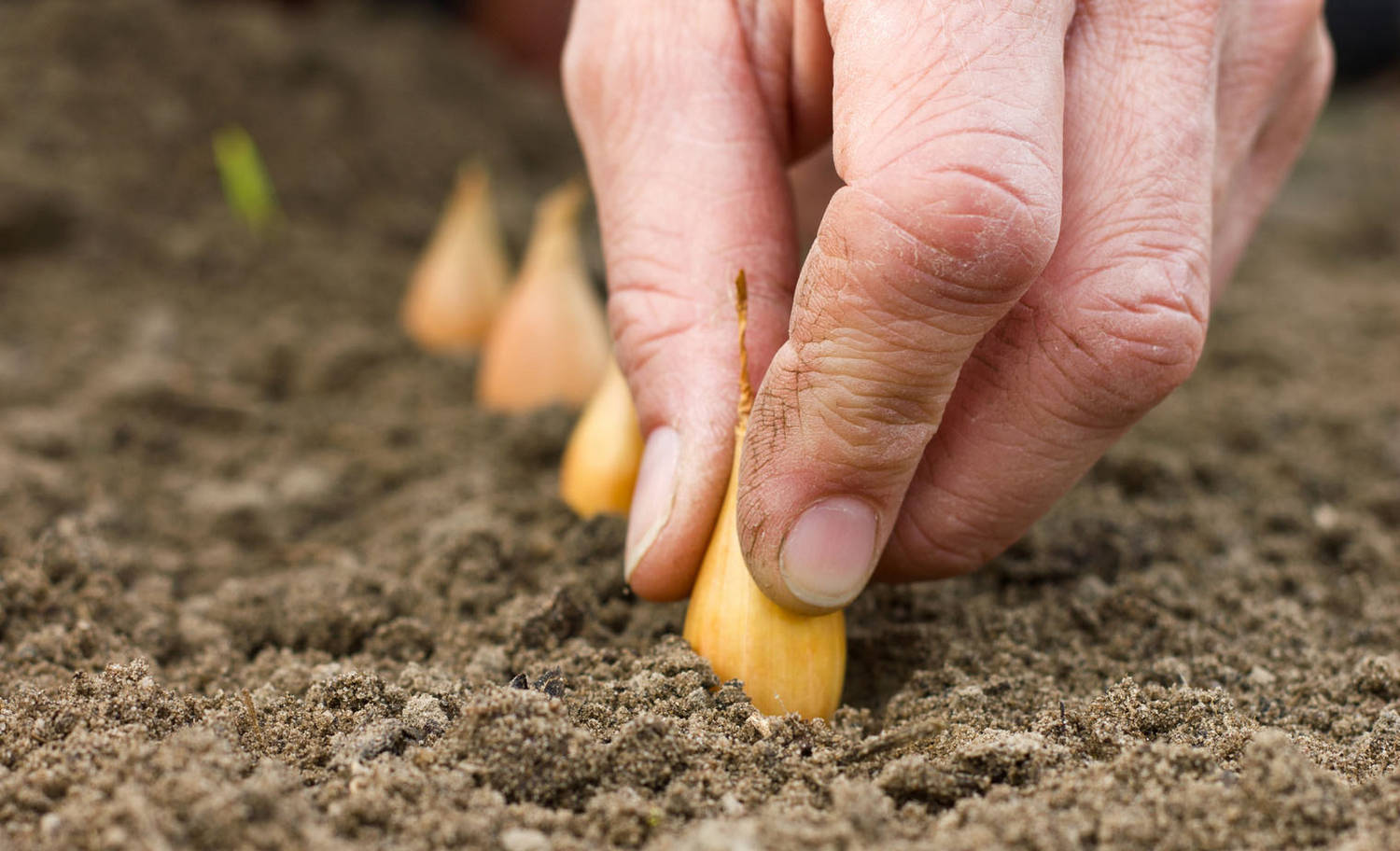 Planting onions in winter in the open ground
Planting onions in winter in the open ground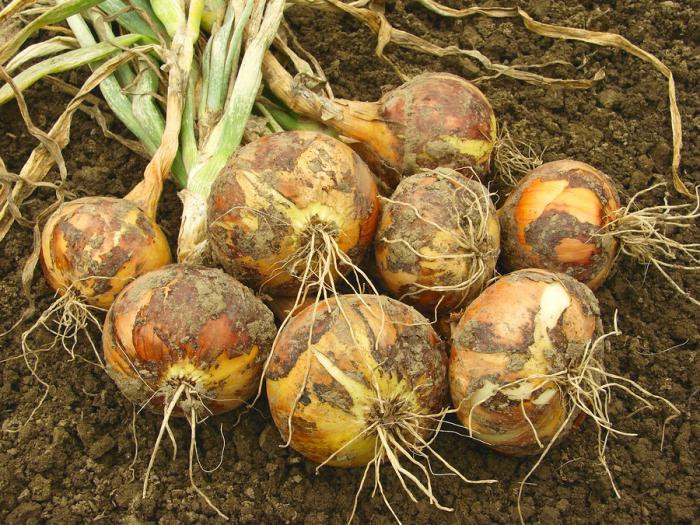 How to feed onions so that the bulbs beat large
How to feed onions so that the bulbs beat large